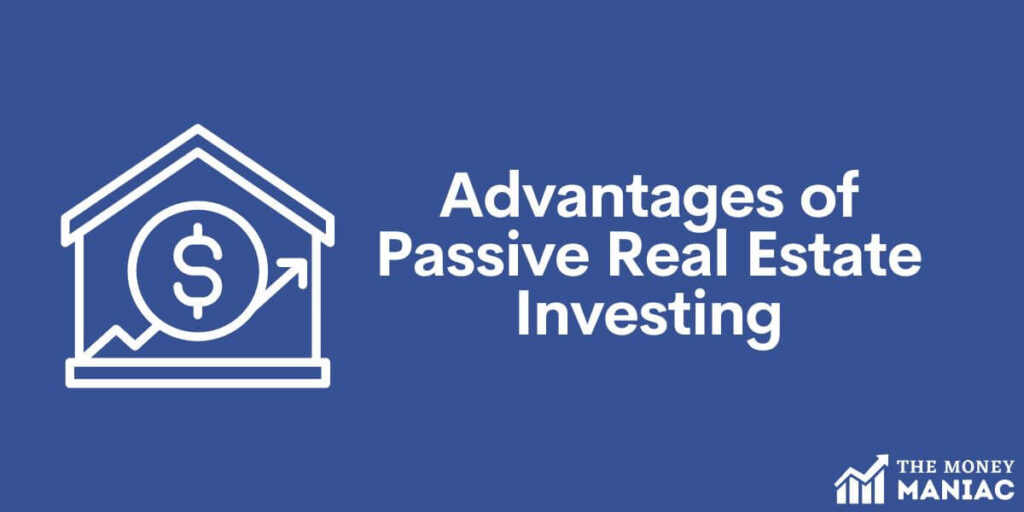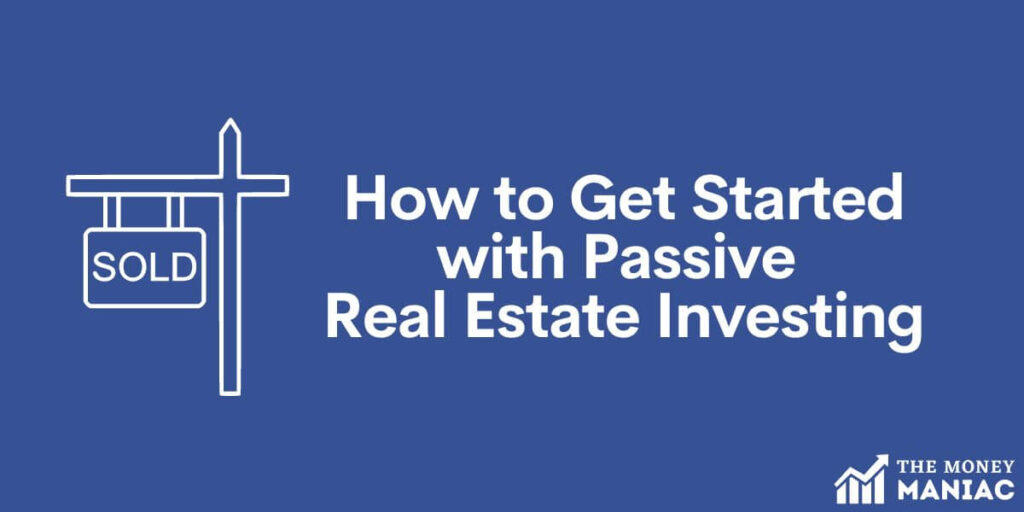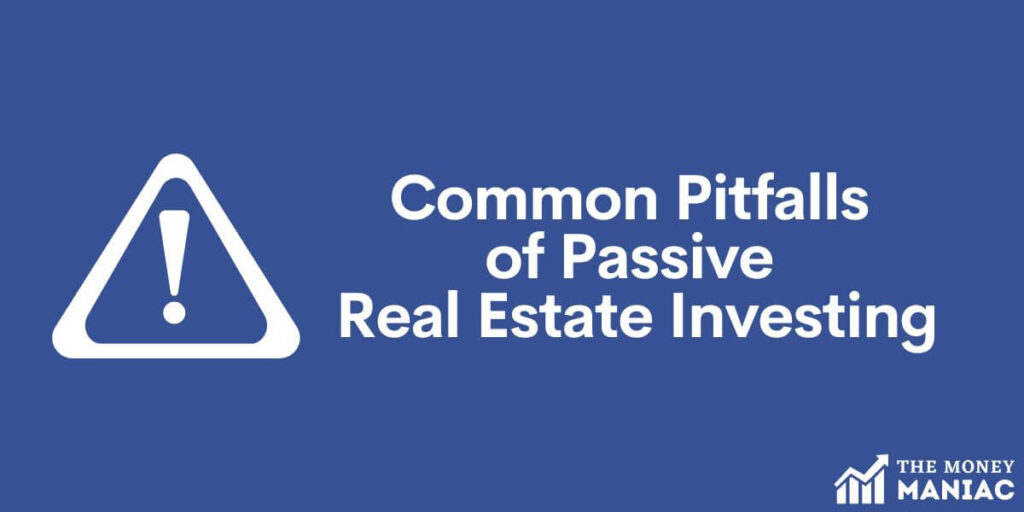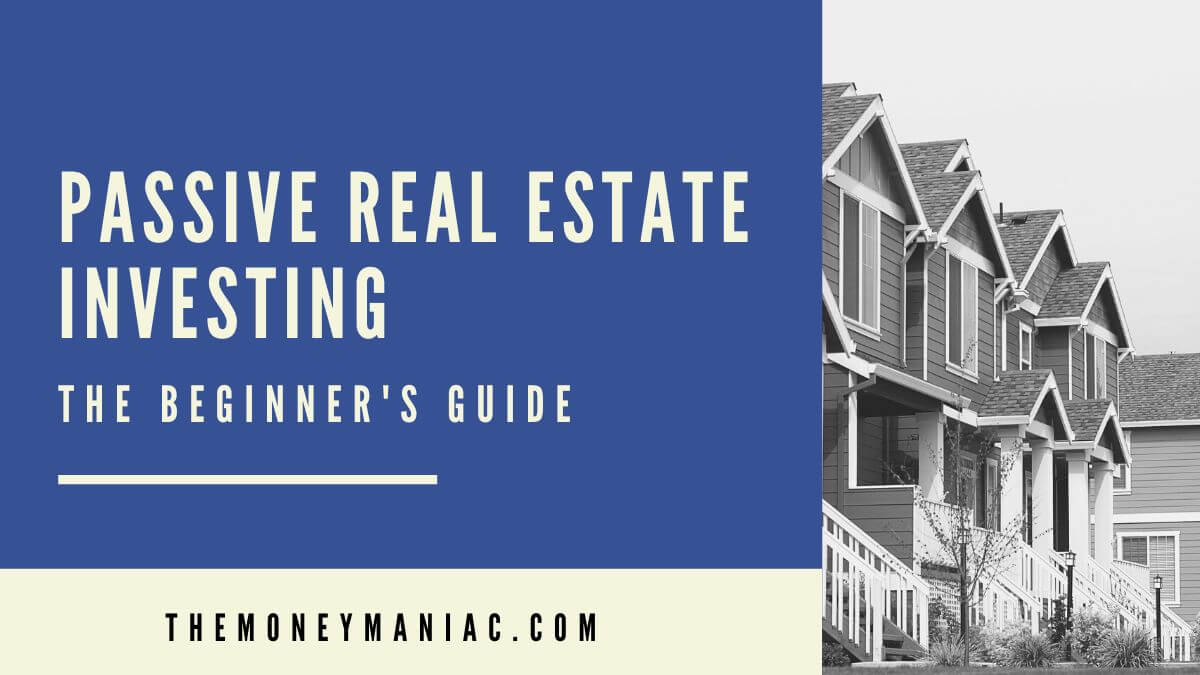Are you tired of the constant hustle and bustle of traditional real estate investing? Spending endless hours searching for the right property, dealing with tenants, and managing repairs can be exhausting.
But what if you could earn a steady income from real estate without all the work? Passive real estate investing is the answer.
And in the current economic climate, there has never been a better time to learn how it works. In this beginner’s guide to passive real estate investing, we’ll show you the ropes of this lucrative investment strategy and how you can build a hands-off income stream.
What is Passive Real Estate Investing?
Passive real estate investing is a strategy that allows investors to generate income from real estate without being actively involved in the day-to-day management of properties. This can be accomplished in partnership with property management companies or through special investment vehicles like real estate investment trusts (REITs) or crowdfunding platforms.
The goal is to create a steady stream of passive real estate income while taking part in the potential appreciation and tax benefits from the underlying assets.
Advantages of Passive Real Estate Investing

Real estate is one of the most popular and best-performing asset classes over the past 20 years. Fortunately, you do not have to be an active real estate investor to participate in this growth.
By passively investing, you can enjoy these three key advantages:
Diversification
Real estate has a relatively low correlation with stocks and bonds, meaning it offers incredible portfolio diversification.
Additionally, within the realm of real estate, there is a wide range of investment opportunities from multifamily properties to publicly traded REITs. This allows investors to spread their risk across different sectors and geographic locations, which can help mitigate the impact of any one property or region experiencing a downturn.
Predictable Cash Flow
Most passive real estate investors receive a predictable stream of cash flow. For example, apartment buildings produce monthly rent and private real estate funds offer quarterly dividend payments.
This consistent cash flow can be especially attractive to retirees and those seeking financial independence. Plus, real estate has historically been less volatile than the stock market. And this stability can be invaluable for passive investors who need dependable returns.
Inflation Hedge
Passive investing in real estate can also help to hedge against the risk of inflation. This is because, in inflationary periods, rising costs lead to fewer development projects and more significant inventory shortages. And in turn, this supply and demand imbalance drives up real estate values and rental income.
Active real estate investing requires a substantial time commitment, but it’s not the only way to participate in a real estate deal. As a passive investor, you can benefit from the advantages of real estate investing without the hassle of vetting deals, maintaining rental properties, or performing your own due diligence. Instead, you can sit back and enjoy portfolio diversification, predictable returns, and inflation protection.
How to Get Started with Passive Real Estate Investing

If you want to build a completely passive investment portfolio, real estate is an excellent asset class to consider. Here is the simple four-step process to get started:
1) Determine Your Investment Goals
Before you begin investing, it’s important to get clear about your specific goals and expectations. What are you hoping to achieve as a passive real estate investor? You should be able to specify your desired level of involvement, risk, and returns.
If you’re not quite sure yet, here are a few common investment goals and how passive real estate investing can help you achieve them:
- Generate passive income: As you might expect, the most popular goal of passive real estate investing is to generate a reliable stream of passive income. If you need cash flow to supplement your income, support you in retirement, or help you reach fat FIRE, passive investing is a great option.
- Grow your wealth: If you are interested in long-term growth, you can still passively invest in real estate. However, may want to focus on distressed assets, value-add projects (like flips), or up-and-coming markets.
- Preserve your wealth: If you are nearing your FIRE number and your retirement, you may be more focused on preserving your wealth than taking risks. In this case, a more conservative real estate investment portfolio that prioritizes stability and cash flow could be the right choice.
- Save for a specific goal: If you have a specific financial goal in mind, such as saving for a child’s college education or a down payment on a home, you may want to invest passively in a short-term project. REITs or real estate mutual funds are well suited for this purpose.
As you can see, your goals directly inform which passive real estate investments are best for you. Consider where real estate fits into your broader financial picture in order to create a personalized investing strategy.
2) Choose the Right Type of Passive Real Estate Investment
There are a few ways to invest in real estate passively. Depending on your investment horizon, risk tolerance, and preferred level of involvement, you may choose to invest in:
Real Estate Investment Trusts (REITs)
REITs are an alternative investment modeled after mutual funds. They are companies that own and operate real estate properties on behalf of investors. By investing in a REIT, you can own a fraction of many real estate assets without having to manage them yourself.
REITs often specialize in one type of property, such as residential real estate, commercial real estate, or storage units. REITs can also be publicly traded, meaning they are available for short or long-term investment.
Crowdfunding platforms

Crowdfunding platforms allow individual investors to pool their money together to invest in projects that wouldn’t otherwise be accessible. These platforms give non-accredited investors access to passive real estate investments and they greatly reduce the minimum investment requirements.
However, most real estate crowdfunding investments are made on a deal-by-deal basis. So, even though they become a passive investment, there is an upfront screening process required.
Real estate syndications
A real estate syndication is when a group of investors team up to purchase a property. One active investor (the general partner) typically finds an opportunity, vets it, and then raises funds through a personal network.
The syndicator is then in charge of closing the deal, hiring a property management company, and returning capital. The investors, or limited partners (LPs), decide which deals to partake in and how much to invest. In turn, LPs are entitled to passive income and a proportional share of the proceeds from the eventual sale.
Private equity funds
Real estate private equity funds are similar to syndications in that they pool money from a group of passive investors. However, instead of calling LPs on a deal-by-deal basis, these funds raise money upfront to pursue a given investment strategy. This way, the general partner (GP) can make numerous active real estate investments without having to secure capital every time.
Private real estate funds offer a completely passive investment opportunity, but they require significant trust in the GP and may come with some liquidity restrictions.
Individual properties

Investing in individual properties is a common way to get started with passive real estate investing. Typically, this strategy involves purchasing a single-family home or a small rental property, renting it out to tenants, and then working with a property manager to run the day-to-day operations. By making direct investments in this way, investors can enjoy passive management, remote ownership, and an additional income stream.
Each of these passive investing strategies has its own set of considerations. The most passive investments may offer less control or overnight, and thus more risk. Whereas fully-owned rental properties may feel like more active real estate investing in the beginning phases.
While REITs or real estate mutual funds are the fastest paths to passive income, they do not offer the same tax benefits as direct ownership. So if your goal is to shield taxable income, actively investing may be your best bet.
3) Find a Reputable Investment Platform
If you want to pursue a truly passive investing strategy, it’s important to select a platform that will protect your capital and curate worthwhile opportunities.
Here are a few steps to take when choosing a passive real estate investment platform:
- Research: Create a list of platforms that specialize in passive real estate investing and have a solid reputation in the industry. Although they don’t offer investment advisory services, it is critical to look for platforms that filter opportunities by verifying the credibility of each project.
- Read reviews: Check out online reviews and testimonials from other investors who have used the platform. Look for comments about the ease of use, quality of deal flow, and ability to withdraw funds in a timely manner.
- Consider fees: Understand the fees associated with each platform. This may include asset management fees, transaction fees, or any other one-off costs. Make sure the fees are in line with industry standards and communicated clearly.
- Check the track record: Look for a platform with a proven track record of success. Ask about the platform’s historical returns and compare them to industry benchmarks. Although past performance does not guarantee future returns, it may indicate the type of passive investments you can expect to see.
- Evaluate customer service: Make sure the platform offers excellent customer service and is responsive to your questions and concerns. A reputable platform will be transparent and provide you with all the information you need to make informed investment decisions.
To begin your search, here are a handful of well-regarded real estate crowdfunding sites:
CrowdStreet
Crowdstreet has an easy-to-use interface for finding and evaluating high-quality real estate investments. Unfortunately, the platform is only available to accredited investors.
CrowdStreet has a relatively high investment minimum of $25,000. However, it charges no fees for individual investment property deals and anywhere from 0.25% to 2.5% for customized portfolios.
Fundrise
Fundrise offers five account levels. Starter, the lowest tier, requires just a $10 minimum investment but restricts access to special features. At higher account levels, with larger initial investments, users can invest via an IRA, participate in limited funds and offerings, and connect with the investor relations team.
Fundrise is not limited to accredited investors, but they do have a 0.15% advisory fee and 0.85% asset management fee.
Roofstock
Roofstock enables users to passively invest in single-family homes. The platform assists with everything from acquiring a rental property and managing it to eventually selling it.
Through remote ownership, Roofstock helps individual investors build portfolios and generate passive income from real estate investments across the United States. The platform can even help with IRA investing and 1031 exchanges.
Streitwise
Streitwise has been named the best real estate investing company for “conservative exposure.” The 18-year-old platform offers a REIT with a nearly 9% average total return over the past 6 years. This opportunity is available to all investors and has a minimum investment of less than $5,000.
Streitwise also hosts direct deals that range from hotels in Oregon to shopping centers in Arizona or apartment buildings in Taxes. These deals pay quarterly dividends, making them a great source of passive income. And the only fee that the platform charges, a 2% management fee, is taken directly out of dividend income rather than from the original investment.
4) Do Your Due Diligence
Before investing in any passive real estate opportunity, it’s important to do your own research to ensure that the investment is a good fit for your financial goals. Here is what a typical due diligence process looks like:
- Research the investment: Conduct thorough research on the investment opportunity, including the property, the sponsor, and any associated fees. Make sure you understand the investment structure and how your returns will be generated.
- Check the sponsor’s record: Look into the sponsor’s past projects and track record. Check for any red flags or warning signs such as lawsuits, bankruptcies, or negative reviews from other investors.
- Review the offering documents: Review the investment’s offering documents, which should include a private placement memorandum (PPM), subscription agreement, and operating agreement. Read them carefully and question every assumption. Ask yourself whether you agree with the strategy and how realistic the projections are.
- Get professional advice: Consider seeking professional investment advice from a lawyer, accountant, or financial advisor who is familiar with passive real estate investing. They can help you review the investment opportunity and spot any potential concerns.
- Understand the risks: No investment is completely risk-free. But it’s crucial to understand what risks you are taking and how comfortable you are with them. Make sure you consider the tax, liquidity, market, and economic factors at play.
As an example, let’s say you are considering investing in a multifamily property in a growing metropolitan area. Before wiring funds, you should research the property’s location, the local market, the sponsor’s track record with similar properties, and the projected returns based on recent trends.
You should also review the investment’s offering documents and ask detailed follow-up questions about anything that is unclear. If you can’t get satisfactory answers, seek professional advice or wait for the next opportunity.
After all, real estate deals are like buses. The next one is always around the corner!
Common Pitfalls of Passive Real Estate Investing

While passive real estate investing offers many advantages, there are also a couple of pitfalls to watch out for. These include:
Lack of Control
One potential disadvantage of passive real estate investing is the lack of control over the investment. In passive vehicles, like a REIT or real estate mutual fund, investors do not have any influence over the underlying properties, how they are managed, or when they may be sold.
This can be frustrating for some investors during times of market volatility or economic downturns. So if you can’t trust a third party, you may be better off with an active real estate investing strategy.
High Fees
Every passive real estate investment requires at least one actively involved party. This individual or enterprise will typically charge a fee, which can eat into investor returns.
For example, REITs often charge management fees and performance fees. And crowdfunding platforms may charge transaction fees for each investment made.
To avoid letting high fees erode your passive income, be sure to carefully review the fees associated with any passive real estate investment and understand exactly what you are paying for.
Market Fluctuations
Both passive and active real estate investments are subject to the same market fluctuations. As supply and demand evolve, interest rates change, and economic conditions shift, the entire real estate market can be affected.
This means passive real estate investors can experience losses, even if they are well diversified. So only invest what you can afford to risk. And keep an eye on market conditions to better understand how they may impact your investments.
Related reading: How To Legally List Wholesale Deals On The MLS: Ultimate Guide
Final Thoughts
If you want exposure to the real estate market but don’t want to actively manage your own properties, you’re in luck. Passive real estate investing is gaining in popularity as REITs and crowdfunding platforms make it easier and easier to do so.
Passive real estate vehicles are an excellent way to generate passive income, enjoy long-term appreciation, and hedge against inflation. So if you are ready to invest, don’t hesitate to start small. As you develop more confidence and knowledge, you can make bigger and better passive real estate investments. Good luck!



